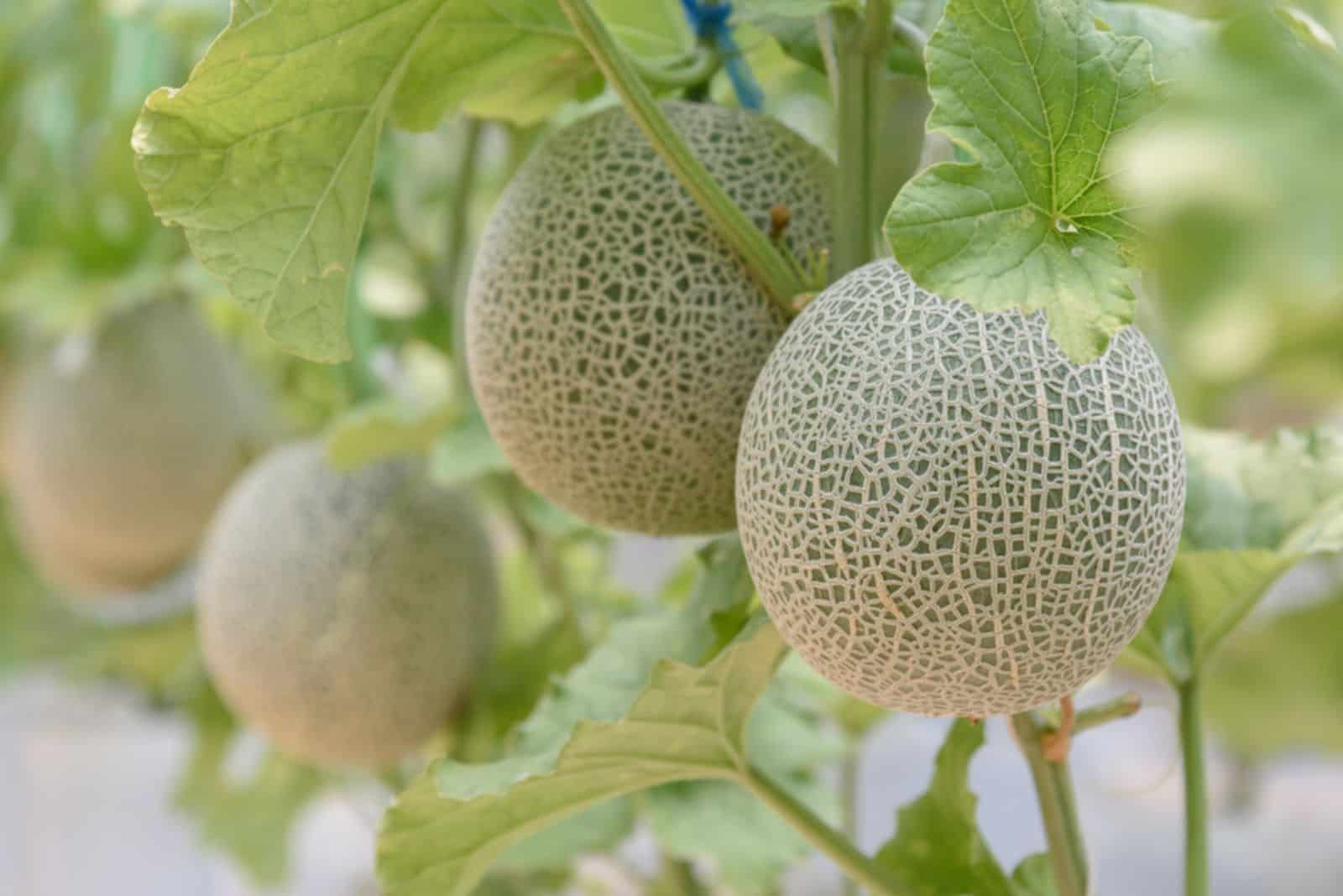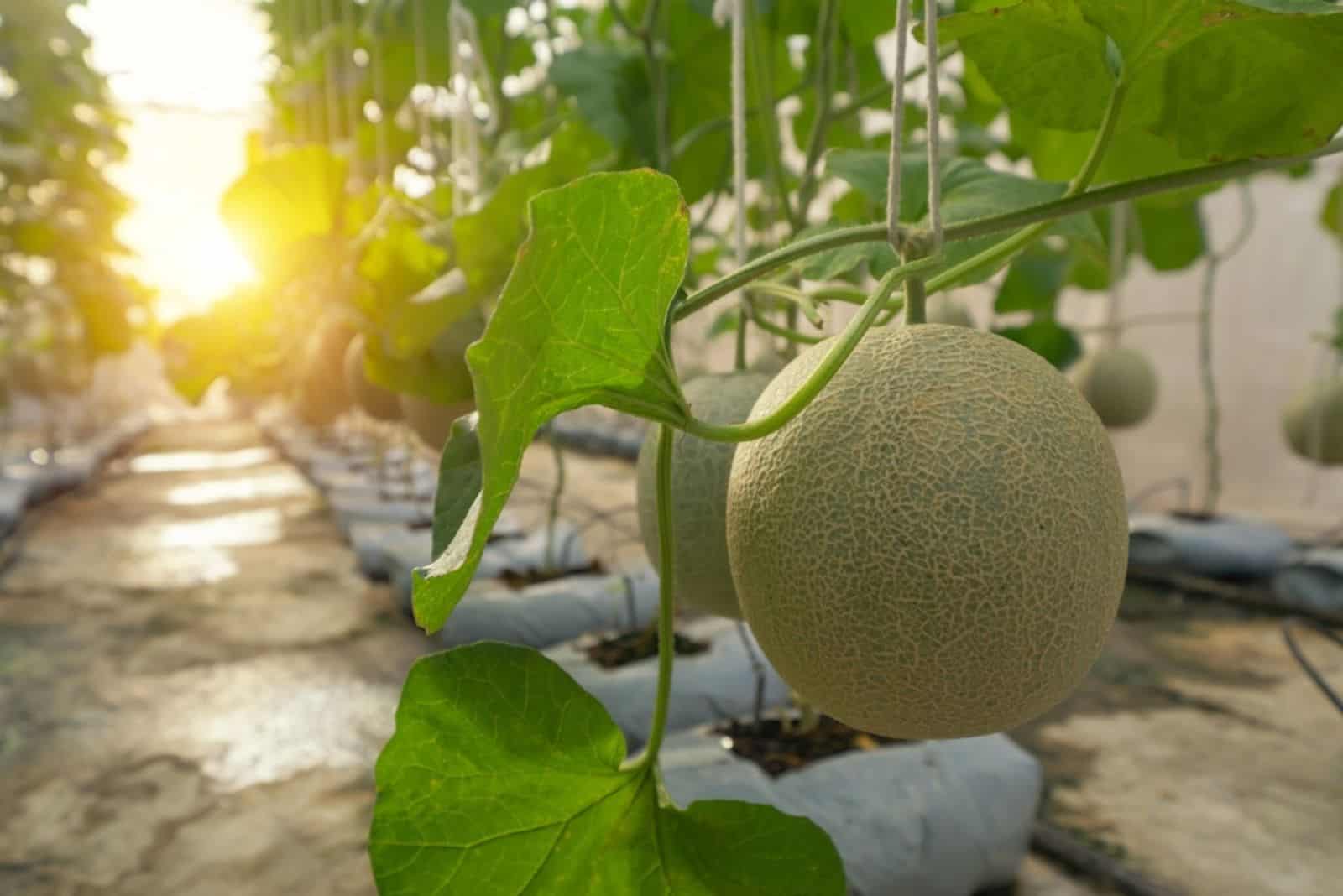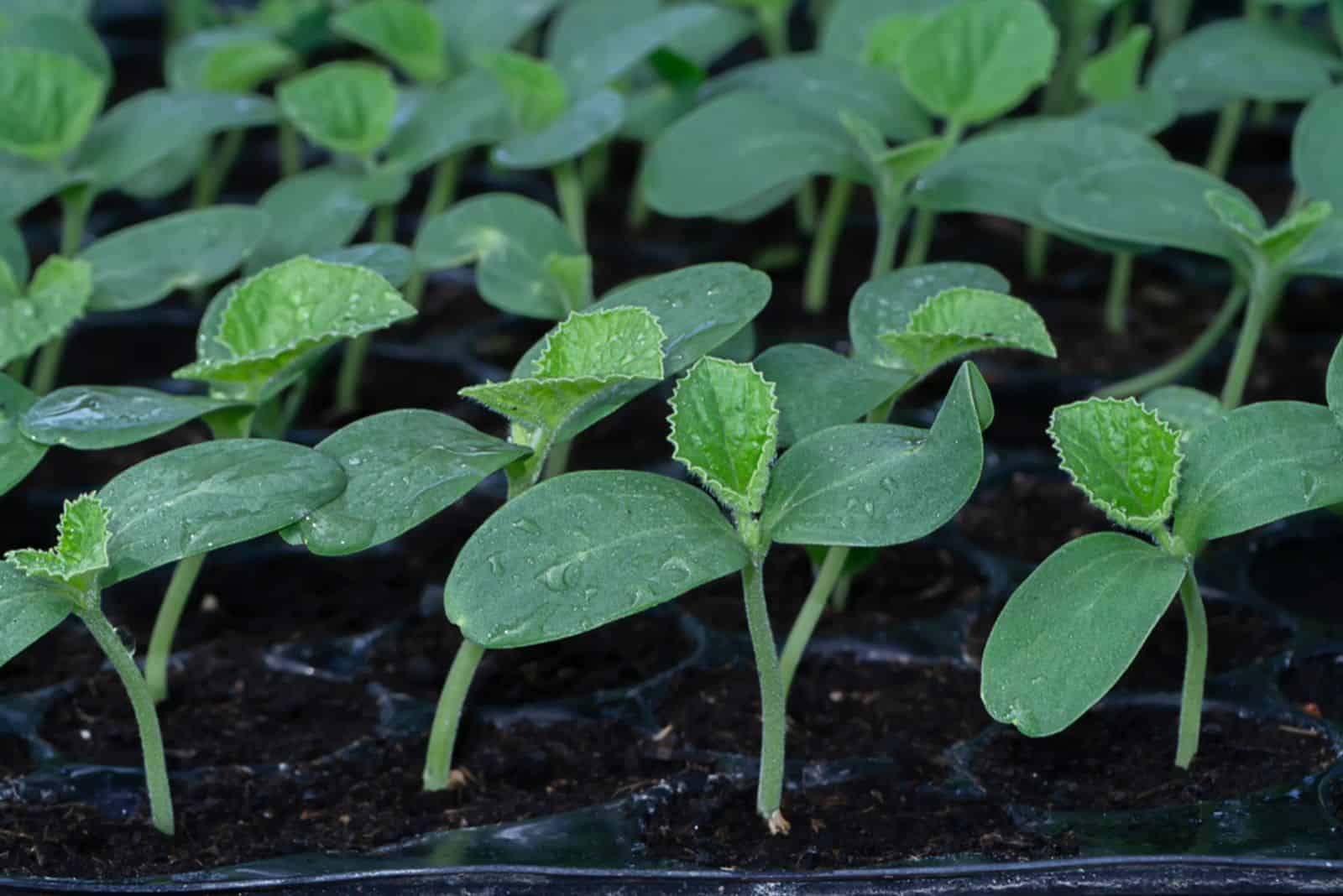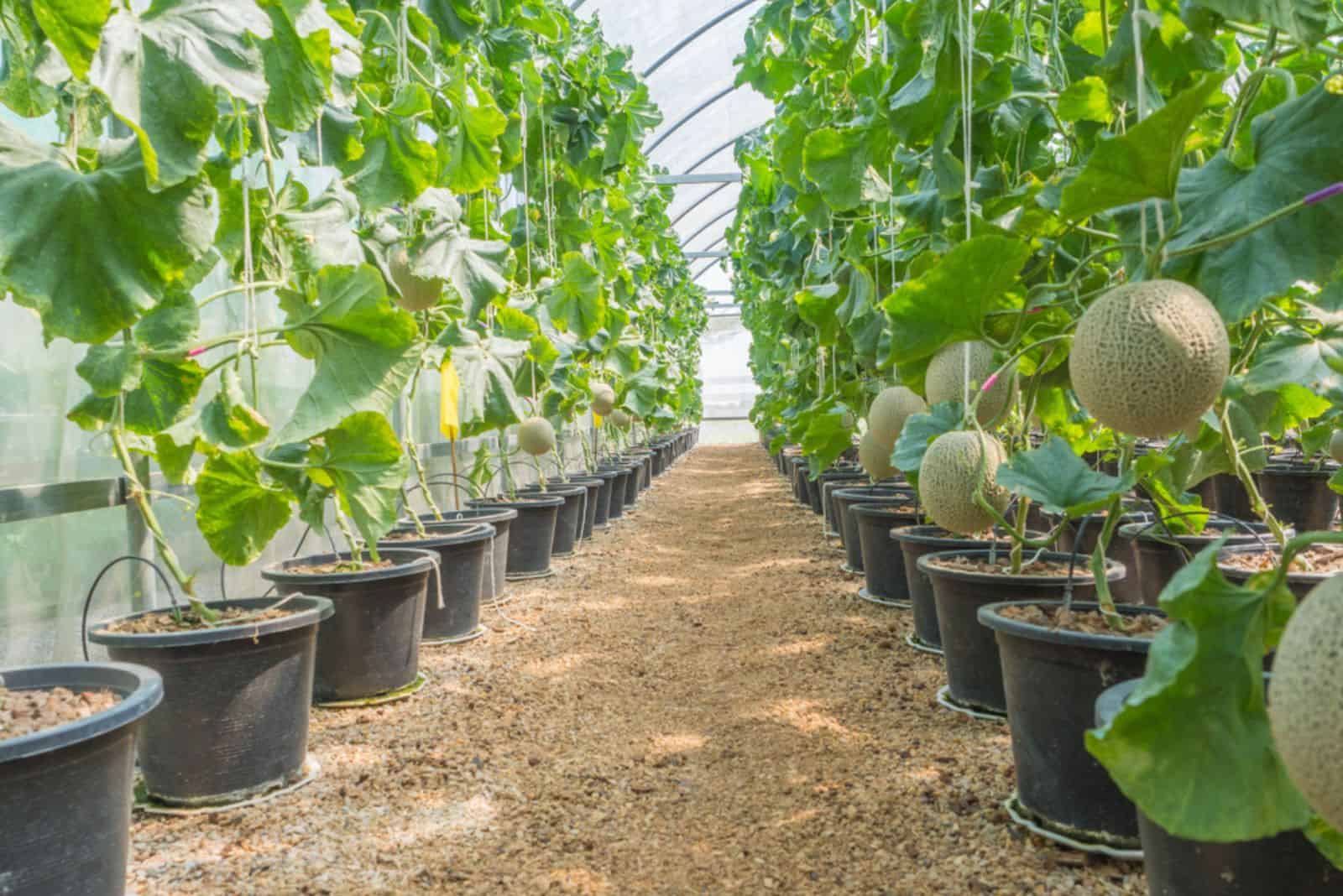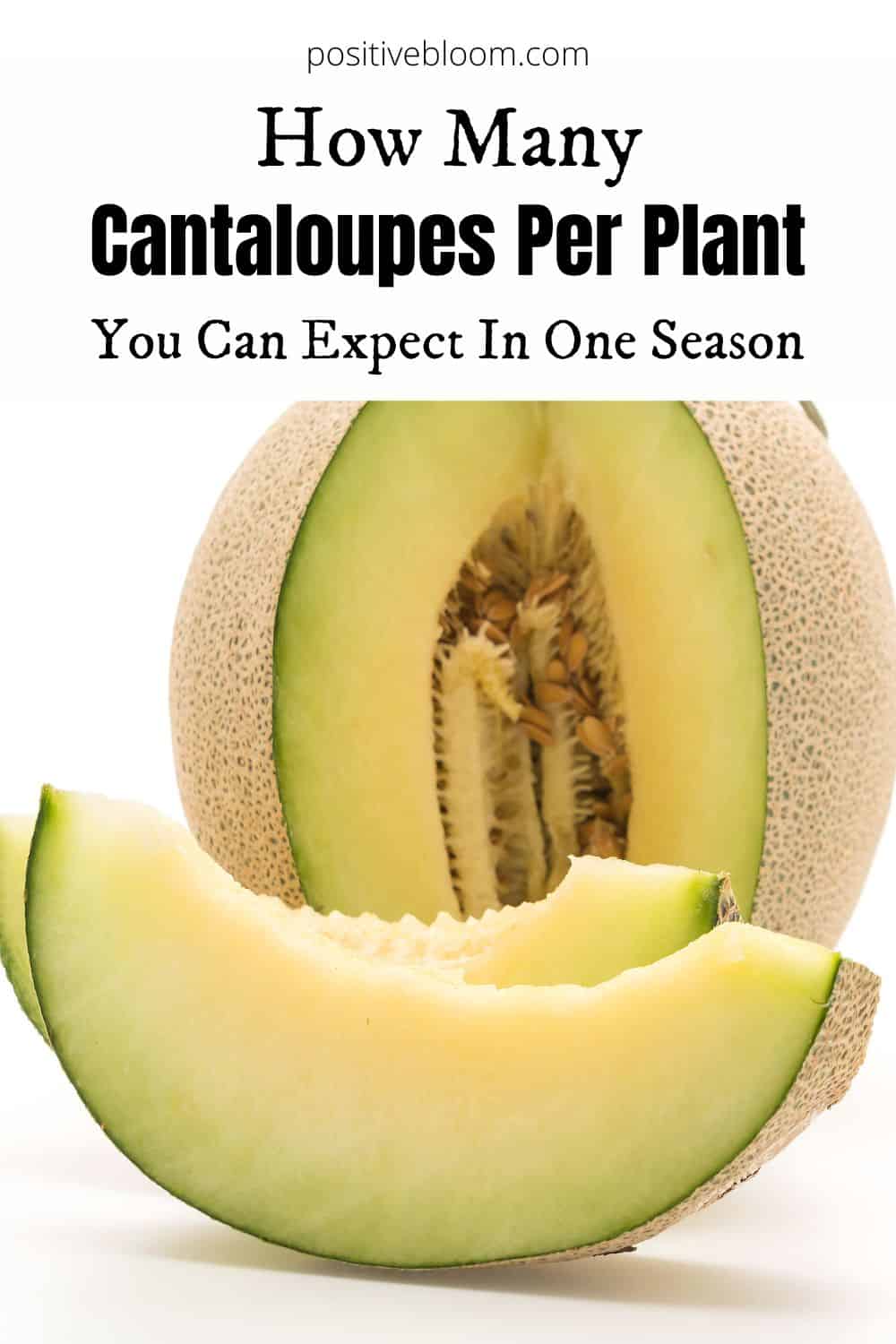Summer is the best time of the year, especially when it’s the right season for melons that come in all different shapes and sizes! My favorite type of melon is definitely cantaloupe.
They have a sweet flavor and are rich in vitamins A and C, beta carotene, potassium, and folate, so not only are you going to enjoy the sweetness of the orange flesh, but you will also improve your well-being!
Growing cantaloupe is actually quite easy. I have been doing it for years now, and I’ve been making yummy cantaloupe smoothies almost every day (seriously, you must try them!). How many cantaloupes per plant you will get depends on the cantaloupe variety and also the growing conditions that you have provided.
If you want to know more about growing melons and how many delicious fruits you can expect to get from each cantaloupe plant, keep reading!
How Many Cantaloupes Per Plant
Before we start, you should know that cantaloupes are actually a type of muskmelon — these fruits got their name based on the North American variety called C. melo var. reticulatus. There is also another famous European variety called C. melo var. cantalupensis.
If you want to plant cantaloupe in your own home garden, then you should be aware of how many fruits you can expect to get from each plant so that you know how many to grow!
According to a study done on 20 different cantaloupe varieties, cantaloupe plants produce 2 fruits per plant. They are usually large fruits with an average weight of 4 to 5 lbs, which adds up to 10 lbs in total, although this can vary among different cultivars.
These plants generally have a long growing season — you can expect to harvest cantaloupes about 80 to 120 days after planting cantaloupe seeds. Of course, this can also depend on the variety and growing conditions.
If you are planning to grow these fruits commercially, I would suggest you grow smaller varieties — this way, you will end up harvesting a lot more cantaloupes than you normally would. For instance, you can yield about 20,000 fruits per acre (around 43,500 square feet)!
However, these are smaller cantaloupes that only weigh around 3 pounds. This also depends on how you are planning to use cantaloupes, and also how much available space you have for them to grow vigorously. Remember, they are vining fruits that need space to spread their long cantaloupe vines!
Read also: How Many Pumpkins Per Plant? Read On To Find Out The Answer
Cantaloupe Varieties & Sizes
There was a study which showed that the variety called Home run yielded the best results because it produces fruits earlier and has the highest number of fruits per plant. The Hale Best Jumbo and Ambrosia can also quickly mature, but the Avatar cultivar produces the largest fruits!
What variety you choose depends on the growing conditions available — you shouldn’t sow seeds in a place that is crowded with other Cucurbits, for example.
Here is a table of cantaloupe varieties, how many crops they produce, and their average size.
[table id=488 /]
How To Grow Cantaloupes
These are one of the easiest plants to grow, especially in Arizona because they absolutely love warm climates and sun!
However, there are some other varieties like the Minnesota Midget that can survive in somewhat colder climates. Conduct thorough research and carefully choose a cultivar that can adapt to the environment in your area.
Now, let’s talk about planting and growing cantaloupes.
Planting Cantaloupes
You could plant the seeds indoors to extend the growing season as these plants fare best in warmer climes. Typically, the seeds are planted 4 to 6 weeks before the last frost date. The soil temperature should be at least 70 degrees Fahrenheit in order for germination to occur. If you are growing them outdoors, you can add row covers to keep the soil warm.
Once the seedlings have been established, they should be transplanted. They have sensitive roots that are easily harmed when transplanting, so I would advise you to plant them in plantable pots, although you can also use heated propagation trays.
Choose a sunny location in your garden and make sure to keep the soil moist. You can mulch them with black plastic to keep the soil warm, prevent weed growth, and retain moisture.
Cantaloupe plants are self-pollinating, which means they have both male and female flowers. However, you will still need bees or other pollinators around to make sure that those delicious fruits are being produced. As the plant keeps growing, you might have to install a trellis to keep their long vines at bay.
You should also use some old pantyhose or netting to provide support and prevent the fruit from detaching from the plant.
You can even grow smaller and bushier varieties in raised beds, though you should know that their vines might go over the edges.
Growing Cantaloupes
Don’t worry, growing cantaloupes is quite an easy task!
Before planting them, I would recommend you do a quick soil test in your garden just to see what kind of soil you are dealing with. These plants need to grow in well-draining soil that is also rich in nutrients.
It is also very important that they receive a lot of nutrients during the growing season, so adding fertilizers or some other organic matter like compost is a must in the cantaloupe plant growing guide.
You should fertilize them during the seedling stage, and also add mulch to prevent weed growth. Growing cantaloupes is quite similar to growing watermelons, so you can easily grow these melons next to each other.
Cantaloupes thrive in full sun, and they need at least eight hours of sunlight throughout the day. The best temperature range for these melons during their growing season is between 65 and 95°F (18-35°C). Anything below 50°F (10°C) and beyond 95°F (35°C) can seriously restrict their growth.
It is crucial to choose the variety that best fits your region because different varieties have different needs. To help these plants survive extremely high temperatures, you should water them more frequently.
Also make sure that the air circulation is optimal as it will make the entire process of pollination a lot easier.
After planting, give the plant plenty of water. Depending on the weather during the growing and flowering stages, give it 1-2 inches (2.5-5 cm) of water. Reduce watering after the fruit begins to grow to get fruit that tastes sweeter.
Never wet the leaves as this might promote powdery mildew and other infections. Always water at the soil level. The soil should be watered until the top six inches (15 cm) are damp.
It’s crucial to avoid overwatering watermelons because doing so might cause root rot, which leads to mushy roots. Plants won’t yield good crops with mushy roots!
If the leaves turn yellow, immediately check for aphid infestation. These pests steal nutritious plant juice, so it won’t have enough to produce fruit. You can use pesticides, neem oil, or insecticidal soap to get rid of these annoyances.
Wrapping Up
Now you know how many cantaloupes per plant you ought to receive. These melons have orange-colored, delicious flesh inside and a greenish-tan rind, though the stripes can depend on the variety.
There are many ways that you can use cantaloupes — whether it’s to make some yummy smoothies, wrap them in prosciutto, or add them to fruit salads, you will enjoy every bit of it!
These are also one of the easiest plants to grow from seeds, and you won’t even break a sweat when growing cantaloupes in your garden. Simply leave them in a sunny location, add some fertilizers every now and then, water them, and you will get to eat some tasty melons in no time!
I hope this article was helpful.
Until next time!
Like this post? Share or pin it for later!

